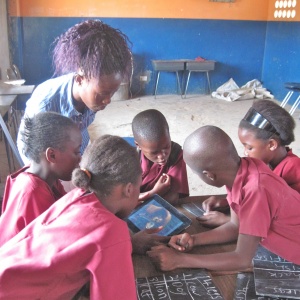OER4Schools/Principles of interactive teaching
From OER in Education
Principles of interactive teaching:
- recognising children as individuals actively engaged in interacting with the world, rather than passive recipients of knowledge
- assessing learning needs and tailoring teaching to the child’s current level of knowledge and understanding (“scaffolding” or “child-centred” approach)
- “multimodal” interaction and expression – using different modes of presenting material and expressing ideas (drawing, video, audio as well as conventional texts) to engage learners
- higher-order thinking – encouraging skills like analysis, synthesis, evaluation, sorting and categorising
- improvable ideas – providing an environment where ideas can be critiqued and refined
- diversity of ideas – exploring ideas and related/contrasting ideas, encouraging different ideas
- building directly on others’ ideas to create joint knowledge products
- democracy in knowledge building – everybody participates and is a legitimate contributor to knowledge
- learner agency and peer support – encouraging students to take responsibility for their own and one another’s learning
| Resource details | |
| Title | Principles of interactive teaching |
| Topic | [[Topics/OER4Schools|OER4Schools]], [[Topics/Teacher Education Resources for Sub-Saharan Africa|Teacher Education Resources for Sub-Saharan Africa]] |
| Teaching approach | [[Teaching Approaches/|]]
|
| Subject | [[Resources/Teacher Education|Teacher Education]] |
| Age of students / grade | [[Resources/|]]
|
| Acknowledgement | This resource is part of the OER4Schools programme. |


